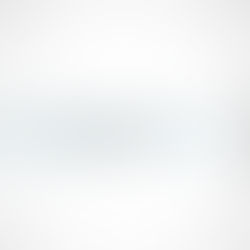7 ways Google Glass is revolutionising healthcare
- Lloyd Price
- Mar 29, 2020
- 6 min read
Updated: Apr 10, 2024

Almost all of the technology incorporated into Google Glass, (Wi-Fi, Bluetooth, cameras, voice activation etc.) is already available on smartphones today. The key difference will be how we interact with this technology when these features are available in our peripheral vision.
Besides from the entertainment value of Google Glass, several early adopters have been trialing the Google Glass Explorer edition to research the benefits the product may hold for medical professionals and patients. Read on to discover the top 7 ways Google Glass is revolutionising healthcare.
1. Data Access
What could be simpler than walking into a hospital room to find that important, up to date data about the patient inside is automatically displayed in the corner of your eye? This is the Google Glass vision. The most highly publicised use of Google Glass in healthcare so far has involved surgical procedures. Phillips and Accenture Technology lab have teamed up to help surgeons view patients’ vital statistics, such as heart rate, oxygen levels and blood pressure on the Google Glass display. This hands free, voice activated system eliminates the need during surgical procedures to turn around to check a computer monitor.
Pristine is a tech start-up at the forefront of developing Glass apps for surgeons, nurses and anesthesiologists for use before, during and after surgery. Kyle Samani, the CEO of Pristine says “If you’re running around all day, using your hands, and you need to access and share information, Glass is going to change how you do your job.” Kyle Samani, CEO of Pristine
But the ability to access patient data from an EHR (electronic health record) is useful for any healthcare professional, not just surgeons who need to sustain a high level of concentration. Some have argued that maintaining eye contact with patients, rather than turning to a computer to look up information, will help develop stronger relationships. A translation service may also help improve communication between healthcare professionals and foreign patients.
2. Hands-free equals clean hands
Critically, wearable technology such as Glass reduces the need for healthcare professionals to touch devices before or after dealing with a patient. Studies have shown that keyboards, smart phones and other electronic devices used on a regular basis are usually teeming with harmful bacteria. Chances are your iPhone is filthier than the average public toilet seat.
With thousands of patients falling ill each year through viruses picked up in hospitals, it is vital that each healthcare professional keeps their hands as clean as possible. Google Glass might also work with Microsoft Kinect technology, which will allow surgeons and other healthcare professionals to select and modify data on a screen with movement sensors, i.e. just by waving a hand in front of the monitor.

3. Emergency Situations
This is an area with massive potential. The Glass platform allows users to view and live stream video recordings in a way that has never been simpler. Consider these situations:
A Google Glass user in the street may happen to record a car accident; the user can then contact Emergency Services and live stream the incident as it unfolds.
A woman at home finds her husband has collapsed and is not breathing. She calls an ambulance and in the meantime follows instructions for performing chest compressions. She does this with the help of a first aid video from NHS Choices displayed on Google Glass.
A visiting nurse, social worker or paramedic who does not have the same expertise as hospital specialists can live stream a video of the patient and receive help and guidance in assessing the situation.
A surgeon stumbles upon a tricky situation mid-procedure and requires immediate assistance from a fellow surgeon in a different hospital, perhaps on the other side of the world.
4. Educational Resource
Trauma surgeon, FutureMed graduate and early adopter of Google Glass, Dr. Rafael Grossmann, believes that Glass could revolutionize the healthcare industry in a number of ways relating to teaching and consultation. “This device and its platform, are certainly intuitive tools that have a great potential in Healthcare, and specifically for surgery, could allow better intra-operative consultations, surgical mentoring and potentiate remote medical education, in a very simple way.” By live streaming an operation to Google Hang Out as Grossman has done, students can have a much better insight into the challenges involved during each procedure and may feel more prepared for the next stage of development in the medical profession.
On the issue of privacy, Grossman explains how he was able to work around this issue by obtaining proper consent before the operation, and ensuring that no personal information was revealed during the recording.

5. Reducing Errors
A simple human error, a momentary lapse of concentration on the part of a healthcare could have tragic results. Doctors and nurses are often tired and overworked, which is why disruptive technology to instill safeguards could save lives. Alerts and reminders will be displayed in Google Glass for health workers with hectic schedules. When administering prescription pills, a pharmacist or nurse in a hospital or care home Google Glass will automatically scan the barcode for medication and compare this with the patient health record in front of them. Instructions for recommended dosage will also be displayed. A Google Glass app could instantly alert the health worker if any mistakes have been made.
Pristine Checklists
Pristine is also developing safety checklists that can be used in different locations across a hospital. “Pristine CheckLists are the simplest and safest way to implement checklists in any clinical environment. Because they’re on Google Glass, they’re hands-free and voice-driven. They’re uniquely suited for patient care environments and easy to use. Perhaps best of all, Pristine can teach you how to use Pristine CheckLists in just minutes.” These checklists may be used for ‘instrument cleaning, drug preparation, complicated tests and procedures etc.’
6. Anyone, anywhere, at any time
This is a somewhat controversial positive point for Google Glass as many people have serious privacy concerns relating to their care. Glass itself is not particularly secure, since anyone could pick up the glasses and access confidential information. Nevertheless, it cannot be denied that continuous documentation of events has obvious benefits in a healthcare setting. For example, a physiotherapist might play past videos of a patient’s movement to evaluate their progress over time. Health workers may take more care to follow correct protocols such as washing their hands properly and pay more attention to their interpersonal skills when dealing with patients. Similarly, patients with the headwear may record their interactions with GPs and use this later to recall the doctor’s instructions, or when forging a complaint against the practitioner.
7. Just for Patients
Just like smartphones have basic functions and additional apps, Google Glass has ‘Glassware’. Glass wearers may display a Yoga class video for example, helpful when performing a ‘downward dog’ or other stretches that requires the user to take their eyes off a screen. Glass wearers may also want to scan barcodes in supermarkets to help with meal planning. As health and fitness self-tracking apps are already some of the most popular on the market today, it’s likely that Glassware will change the way we approach our health and fitness once again.
‘Leading provider of Fitness equipment’ Fitstream, show what a fitness Glassware app will look like while wearing the glasses.
Glassware could have enormous benefits for disabled users. Google Glass could tell a partially sighted user if they are holding a can of soup or a can of beans, perhaps even read the contents of a letter. Deaf users may eventually have a running commentary displayed on Google Glass. Autistic users might be given information on what emotions people are displaying by Glass analyzing their facial expressions.
The hands free capabilities have obvious benefits for users with mobility issues. Glass has already been piloted by disabled users such as Alex Blaszczuk, who is paralyzed from the chest down. Alex wrote this message in her request to become a Google Glass Explorer. “I am a New Yorker, a law student, a quadriplegic. #ifihadglass I could finally capture my life on my own. I would show the world how to thrive with physical limitations in the most interesting city on the planet. With Glass, paralysis doesn’t have to be paralyzing.”

Growth and M&A for Healthcare Technology companies
Healthcare Technology Thought Leadership from Nelson Advisors – Market Insights, Analysis & Predictions. Visit https://www.healthcare.digital
HealthTech Corporate Development - Buy Side, Sell Side, Growth & Strategy services for Founders, Owners and Investors. Email lloyd@nelsonadvisors.co.uk
HealthTech M&A Newsletter from Nelson Advisors - HealthTech, Health IT, Digital Health Insights and Analysis. Subscribe Today! https://lnkd.in/e5hTp_xb
HealthTech Corporate Development and M&A - Buy Side, Sell Side, Growth & Strategy services for companies in Europe, Middle East and Africa. Visit www.nelsonadvisors.co.uk

















































